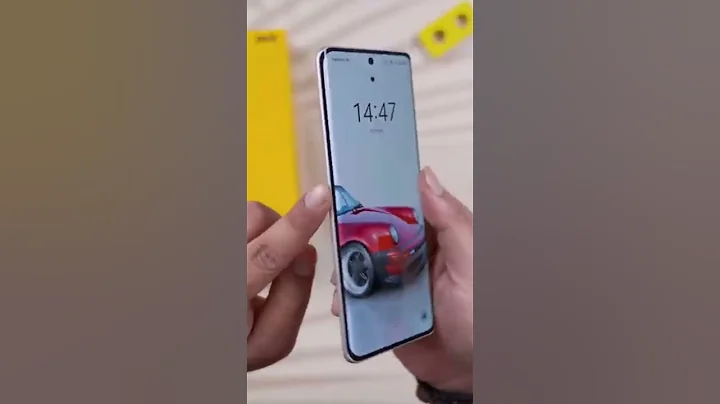If you often follow our Sanyi Life-related content, you may remember that we have always been relatively cautious about the "high-pixel" camera design on smartphones.
For example, since 2019, when smartphones began to be equipped with a large number of 48-megapixel and 64-megapixel solutions, we have often criticized this design for not bringing about as much improvement in clarity as it seems.

In 2020, when many flagship models began to use 64 million or even 100 million pixel main camera solutions, we also reminded everyone of the significant shortcomings of this "big bottom and high pixel" solution in terms of focusing experience.
In fact, until now (the end of 2021), looking at the entire smartphone market, it can truly achieve near-perfect outsole in terms of clarity, anti-shake effect, focus speed, macro capability, full-pixel photo delay, etc. There are still few high-pixel models.

Sample night scenes shot using iPhone 13 Pro Max 12-megapixel camera
On the other hand, although high-pixel mobile phone imaging solutions have been available for more than 3 years, there are still some top flagship products on the market that insist on using 12-megapixel The "outsole low pixel" design. And their actually not bad image performance has also made some consumers more insistent that "high pixels on mobile phones are useless."
However, in the recent period, there have been reports of leaks showing that some models that have adhered to the "low-pixel main camera" design in the past are likely to switch to outsole high-pixel solutions in 2022. This means that the “12 million pixels” era that some users talk about may really become history.
Samsung , Apple , Sony all-in-one camera solution, starting at 48 million pixels
The first brand to be rumored to be fully switching to "high pixels" is Samsung. As we all know, since 2020, it has been using its own flagship models in I have been using two sets of camera solutions since. The "medium cup" and "large cup" use a 12-megapixel outsole (1/1.7-inch) main camera with stronger focusing performance, paired with a 64-megapixel secondary camera responsible for video shooting; while the "extra large cup" is just the opposite. In the past, a 108-megapixel main camera focused on video shooting was used, and it was equipped with multiple secondary camera solutions with lower pixels but strong focusing performance to achieve both fast focusing and 8K video shooting functions.

I have to say that this design is actually very practical, at least the macro performance is much better than those 2 million pixel "independent macro lenses" on the market. However, according to the current leaked information, Samsung will likely cancel the 12-megapixel main camera design in the next generation of flagship products and switch to the new 50-megapixel CMOS with a larger size and stronger focusing performance. The main photography plan for "Big Cup". Of course, if this news is true, then the 64-megapixel secondary camera is likely to be changed at the same time. After all, the new solution no longer requires a secondary camera to perform video shooting functions.

iPhone 14 Pro renderings posted online
Following Samsung, well-known analyst Ming-Chi Kuo first proposed in a report in September this year that the iPhone 14 Pro series will use a new high-pixel main camera. He even accurately "predicted" the main camera sensor specifications of the iPhone 14 Pro, saying it would be a 48-megapixel, 1/1.33-inch customized solution.
If this prediction is accurate, then the single pixel size of Apple’s customized sensor will reach 1.25μm, far exceeding the high-pixel sensors that are more common in the industry today (single pixel size 0.6-0.8μm). But considering that all current iPhone 13 series are equipped with a 1/1.7-inch 12-megapixel main camera with a single pixel size of 1.8μm, Apple’s customized high-pixel sensor will most likely also add pixel “four-in-one” mode, in exchange for 2.5μm equivalent super large pixels, further increasing the photosensitivity.

And the last one to be exposed was Sony.Although they just recently launched the Xperia PRO-I with a 12-megapixel 1-inch outsole (actually cropped for 20 million pixels), according to breaking information, Sony’s next-generation main flagship Xepria 1 IV will It will use an amazing rear four-camera design with a total of 48 million pixels.

And it is said that these four CMOS chips will all be based on Sony's self-developed solutions and try not to use parts from other manufacturers. From this point of view, "Suo Dafa" might be holding back some big move.
Why was 12 million pixels abandoned? Because the conditions are ripe
As we all know, in the entire smartphone industry, Samsung and Sony have always been regarded as relatively special entities, because they not only produce their own mobile phones, but they are also the main suppliers of mobile phone image sensors (CMOS) to the entire industry. Under this circumstance, in the past, these two companies only sold high-pixel CMOS solutions to external parties, but they have always insisted on using 12-megapixel main cameras, which has indeed aroused a lot of attention and discussion among consumers.
So, why are they collectively switching to high-pixel CMOS solutions now? First of all, from the perspective of the development history of CMOS technology itself, the early outsole high-pixel CMOS, as we said at the beginning of this article, was actually born after a lot of sacrifices were made. Compared with the previous top-level 12-megapixel CMOS, the continuous shooting capability It becomes weaker, the focus performance becomes worse, and the photosensitive design is greatly reduced. Under this circumstance, it is normal for Samsung, Sony, and Apple, which has always been wealthy and relies on customized components, not to welcome such high-pixel solutions.

But the situation is different now. Whether it is Samsung's GN series or Sony's IMX766 and IMX789, these latest large-sole high-pixel CMOS are actually perfect in terms of overall design concept, pixel size, and focusing structure. It has inherited the technology of the previous top 12-megapixel solution and even made further improvements. Under this circumstance, even manufacturers that are "well aware" of the shortcomings of early high-pixel CMOS naturally have no reason to reject these latest high-pixel flagship CMOS.
Secondly, the rapid progress of smartphone SoC performance, or ISP performance, is also a crucial factor in pushing the entire industry into the "high-pixel photography era". You know, it is precisely because many flagship SoCs in the past had certain deficiencies in ISP throughput that once the "high pixel mode" is actually turned on for most high-pixel models, the camera algorithm will be greatly simplified, and ultimately As a result, the image quality in "high pixel mode" may not be as good as the default low pixel mode.

But looking at several top smartphone SoCs just released this year, it is not difficult to find that whether Snapdragon 8 Gen1 or Dimensity 9000, the 18bit triple concurrent ISP they are equipped with has already exceeded 200 million pixels. Specifications CMOS is fully prepared, and can even achieve 30FPS multi-frame noise reduction synthesis of the 108-megapixel main camera in "full pixels" mode. In this case, high-pixel CMOS will no longer put any pressure on computing power, and manufacturers can finally adapt extremely complex camera algorithms to ultra-large soles and ultra-high-pixel main cameras to truly exert high resolution. Advantage.

Finally, what some friends may not have noticed is that as flagship models such as Redmi K40 Gaming Enhanced Edition, vivo It has attracted the attention of mobile phone manufacturers and some users. In order to truly take advantage of the resolution advantages of high-pixel CMOS outsole, a lens with light transmittance, , and distortion control is actually an indispensable part.
However, because the cost of truly advanced optical lenses is really high, in the past, even if mobile phone manufacturers wanted to use it, they may have to consider the issue of consumer acceptance. The final result was often a compromise in materials and image quality. Decline. However, as the market atmosphere has gradually matured, high-end optical designs including Largan 's 9P lens and AAC Technology WLG (wafer level glass) glass-plastic hybrid lens have greater market space. And this is likely to be the last piece of the puzzle that unlocks the full potential of the "big bottom and high pixels" of smartphones and declares the end of the 12-megapixel era.
[The pictures in this article are from the Internet]





















